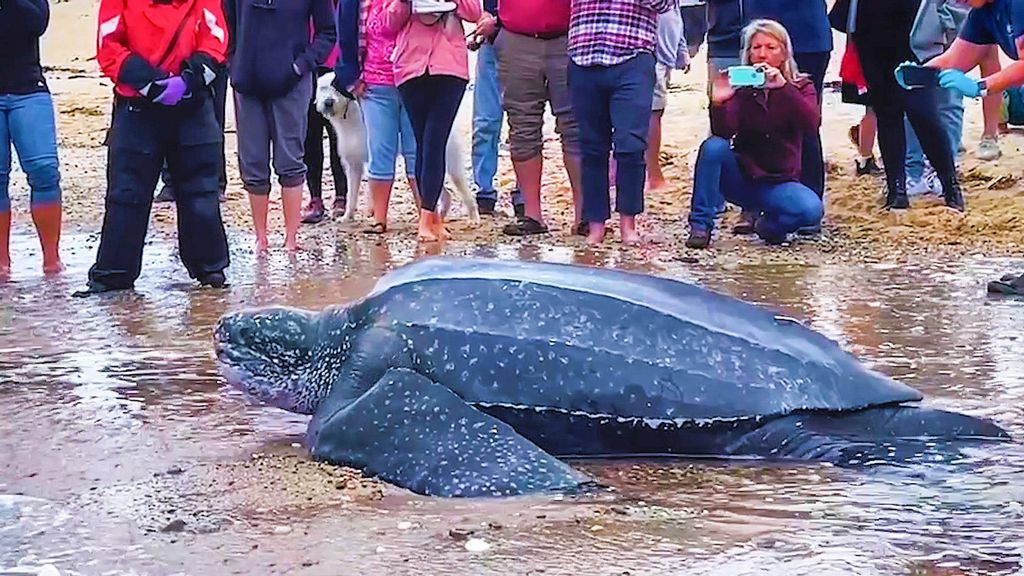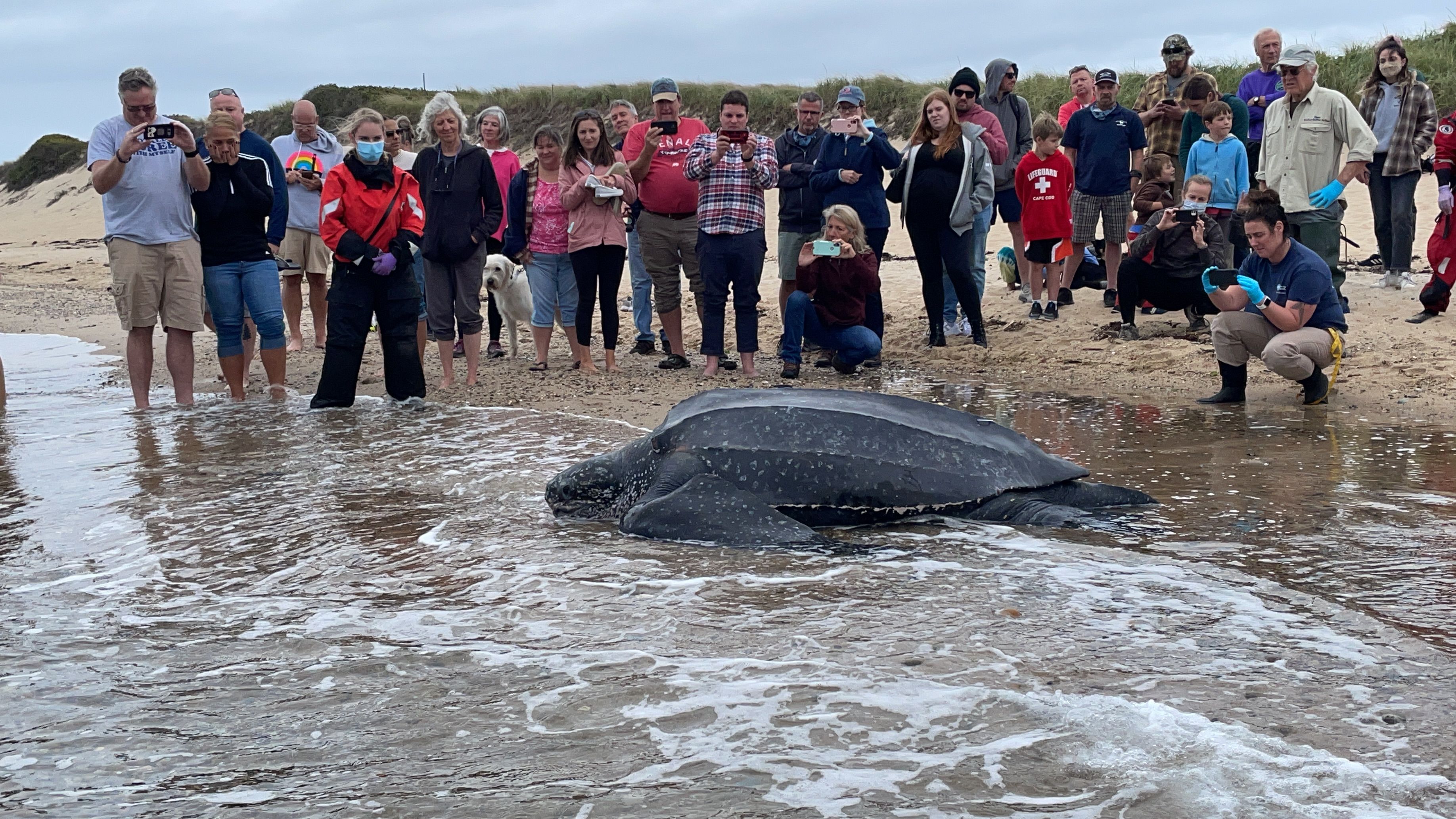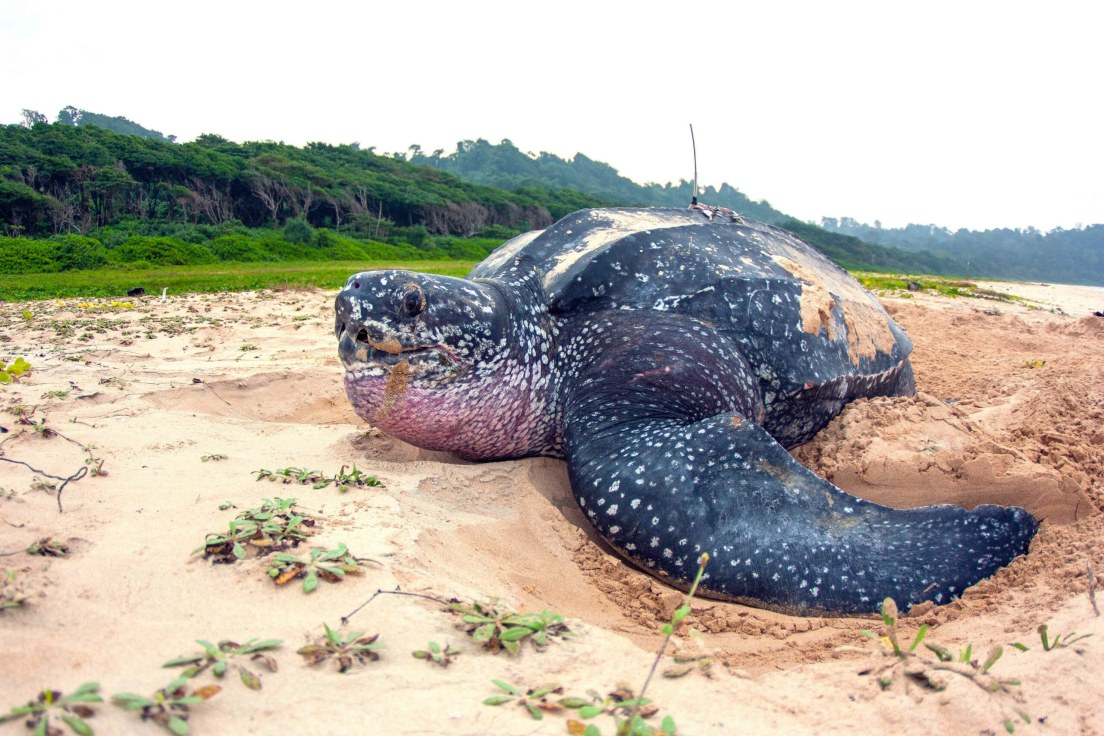The 600-pound leatherback turtle was tethered with a tracking device, so its movements could be monitored in the wild.

Footage shows the huge creature slowly making its way towards the water as supporters watch from the shore on October 12.
“The local response organization for stranded sea turtles in the area, Mass Audubon Wellfleet Bay Wildlife Sanctuary, quickly stepped in to rescue him and asked for support from IfAW and the New England Aquarium (NEAQ).”

The organization said leatherback sea turtles are the largest turtles in the world, with adults weighing between 550 and 1,500 pounds.
This particular specimen was estimated to “weigh nearly 600 pounds, which meant the team needed all hands on deck to transport the animal off the beach.”
Before releasing him into the Atlantic Ocean, the New England Aquarium gave him a complete health check and strapped him with tracking devices so his movements in the wild could be monitored.

“Soon, the turtle was brought to the water’s edge, where it slowly but surely made its way back to safer, deeper waters.
“Each leatherback turtle is vital to the survival of this endangered species, and we were proud to be part of such an important rescue alongside two incredible organizations,” the aquarium said.
Their nests are also targeted by humans in Southeast Asia.
Leatherback turtles are also victims of bycatch, a species unintentionally caught by fisheries.
What are leatherback turtles and what do we know about them?
They are the largest species of sea turtle and also one of the most migratory, crossing the Atlantic and Pacific oceans.
Leatherback turtles weigh between 600 and 1,500 pounds (270 to 700 kg) on average and are typically between 55 and 63 inches (140 to 160 cm) long.
Leatherback turtles (pictured) get their name from their shell, which is leathery rather than hard, like other turtles.
Pacific leatherbacks migrate from nesting beaches in the Coral Triangle to the California coast to feed on abundant jellyfish each summer and fall.
Although their distribution is wide, leatherback turtle numbers have seriously declined over the last century as a result of intense egg collection and bycatch in fisheries.
Globally, the status of leatherback turtles according to the International Union for Conservation of Nature, leatherback turtles are classified as vulnerable.
Many subpopulations, such as those in the Pacific and southwest Atlantic, are critically endangered.





